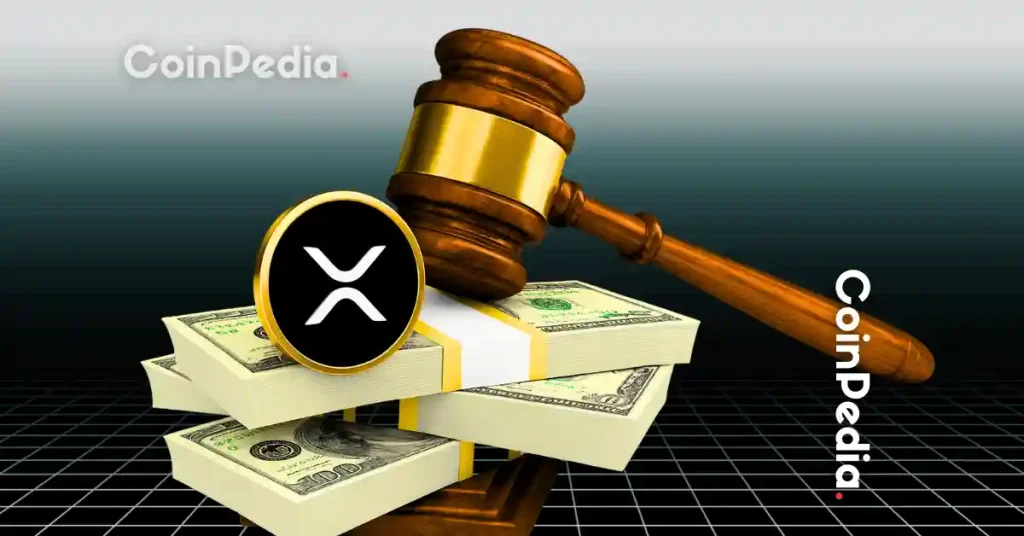Pro-XRP Lawyer Declares SEC Lawsuit Excuse No Longer Holding Back XRP Price Surge
Legal barriers crumble as XRP shakes off regulatory shackles—price momentum builds while Wall Street scrambles to catch up.
The SEC's favorite punching bag just grew fists. For years, regulators pointed to ongoing litigation as the reason XRP lagged behind its crypto peers. Not anymore.
Legal experts now argue the lawsuit's shadow has lifted—clearing the path for institutional adoption and retail frenzy alike. No more excuses, no more delays.
Traders spot blood in the water. With legal uncertainty fading, XRP's fundamental strengths take center stage: lightning-fast settlements, banking partnerships, and a community that never quit believing.
Meanwhile, traditional finance still tries to price assets using last decade's models—as if sentiment, tech, and pure defiance ever fit neatly on a spreadsheet.
XRP's ready to run. The question isn't if, but how high.

For years, Ripple’s legal battle with the U.S. Securities and Exchange Commission (SEC) has been at the center of every XRP discussion. Price slowdowns, adoption hesitations, and investor concerns were often linked back to the lawsuit.
But according to pro-XRP lawyer Bill Morgan, that chapter is finally closed, and it’s time to MOVE forward.
The $125 Million Question
The conversation reignited after Jake Claver, CEO of Digital Ascension Group, raised a direct question to well-known XRP lawyer James K. Filan on social media. He asked whether the $125 million fine imposed on Ripple by the judge had already been paid into the U.S. Treasury.
Adding clarity, retired securities lawyer Marc Fagel responded that the payment had, in fact, been made on August 18, confirming Ripple had already settled its penalty with the Treasury.
The $125m penalty was paid to the US Treasury last month. pic.twitter.com/c3b80rToQ8
— Marc Fagel (@Marc_Fagel) September 21, 2025Bill Morgan : Lawsuit Excuse “Run Its Course”
Now that Ripple has paid the $125 million SEC penalty and the lawsuit is over, the excuse for XRP’s weak price or slow adoption no longer holds.
Bill Morgan then struck in with a strong statement: “Yes, the lawsuit excuse has run its course for any further lack of XRP adoption or flat price action.”
His message was simple: the legal uncertainty that was often blamed for XRP’s stagnation can no longer justify weak performance or slow adoption.
XRP Price Struggles Despite Positive Moves
Even after the launch of the first U.S. spot XRP ETF and a major regulatory win, XRP has struggled to gain momentum. The token slipped below $2.80 and lost its market cap ranking, falling from third to fourth position.
Despite this, adoption and ecosystem growth continue. Last month in Japan, gaming firm Gumi established an XRP treasury worth 2.5 billion yen ($17 million), signaling increasing corporate interest. Meanwhile, Flare Network just launched a stablecoin backed by XRP on Liquity V2, enhancing DeFi use cases and on-chain liquidity.
The first XRP-backed stablecoin comes to @FlareNetworks with @enosys_global Loans![]()
→ Launching with FXRP and wFLR, then stXRP and other FAssets
→ Backed by Collateralized Debt Positions (CDPs) mechanism
→ @LiquityProtocol V2 friendly fork + Stability pools + FTSO-powered… pic.twitter.com/ehK8lbGuXl
![]()
With the XRP lawsuit now over and the ecosystem still growing, a new question arises: if the legal excuse is gone, what’s truly holding XRP back?

